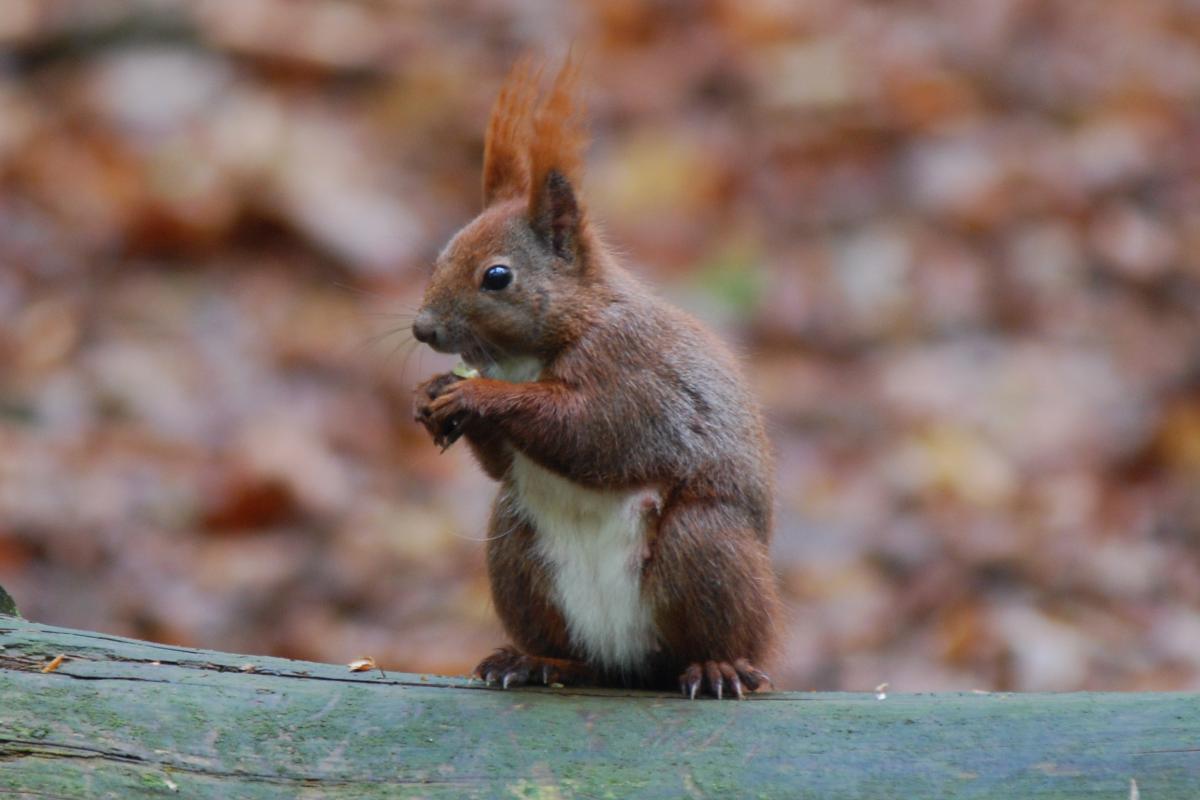Red Squirrel
Recognise!
The red squirrel is easily recognized by its reddish brown, or sometimes dark brown fur and white belly. Its lateral black eyes, its ear brushes and its long bushy tail are unique characteristics of the red squirrel. It can reach a body weight of 200-400g. Its winter fur is considerably denser than the summer fur. Red squirrels are much darker in winter and may appear in different tones of grey. Ear brushes, of a reddish brown coloration, reach up to 3.5 cm in the winter. They are either absent or considerably smaller in the summer. Red squirrels occur in broadleaved and mixed forests. They are also abundant nowadays in parks and gardens.
Did you know?
The red squirrel is anatomically well adapted to an arboreal lifestyle. Its bushy tail may reach 15-20 cm in length and serves to keep in balance when climbing trees or as a steering device when jumping. Males and females cannot be distinguished based on coloration nor size. They are diurnally active and build nests to sleep and rest. Nests are commonly round constructions placed in tree forks or the basis of branches. The diet of squirrels is very diverse including berries, nuts as well as other fruits and seeds. Additionally they feed on buds, bark, lichens and fruit. They also occasionally prey upon bird eggs or fledglings as well as earthworms, insects, larvae and snails.
The red squirrel does not hibernate and is active all year round. This is why in autumn the constitute food reserves for the winter, which are commonly dug underground. If food hoards are forgotten, hidden seeds often germinate in spring making the red squirrel an important seed disperser contributing to the rejuvenation and renewal of forests.
The pine marten is one of the red squirrel’s natural predators because of its climbing abilities similar to the squirrel. Other predators are the wild cat and birds of prey. In parks and gardens, the house cat represents the most common predator.
